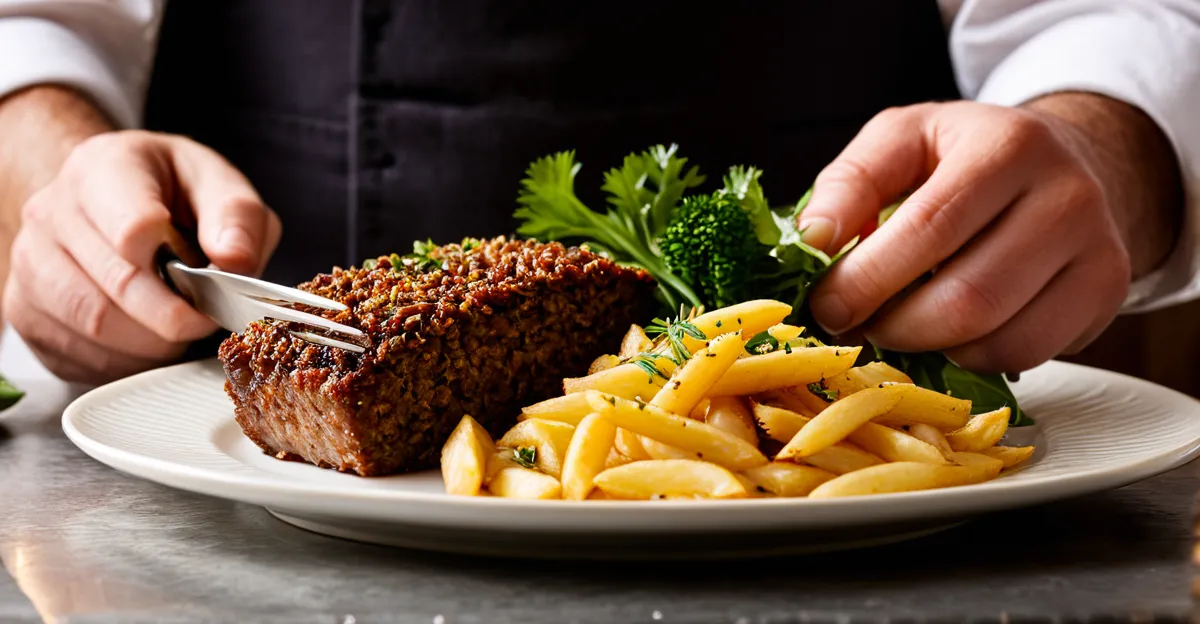Unique Characteristics That Define British Cuisine
British cuisine uniqueness arises from its strong ties to tradition and regional food cultures that have been preserved and celebrated over centuries. At its core, the culinary identity of Britain is shaped by the emphasis on hearty, comforting dishes crafted from locally accessible ingredients.
Traditional British food showcases distinctive preparation techniques, such as slow roasting and baking, which enhance the natural flavors of simple ingredients. These methods promote a sense of homeliness and practicality, aligning with British values of thriftiness and resourcefulness. The reliance on staples like root vegetables, meats (especially beef and lamb), and dairy products reflects the agricultural landscape and climate of the UK.
Also to discover : Traditional British breakfast ideas?
The culinary identity also benefits from the diverse regional food cultures, where local ingredients and specific cooking styles create unique interpretations of common dishes. For example, the use of fresh seafood in coastal areas complements inland traditions of meat and vegetable stews. This interplay between local sourcing and traditional recipes strengthens British cuisine’s distinctiveness.
In summary, British cuisine uniqueness is deeply intertwined with its historical roots, commitment to traditional British food, and a profound respect for regional diversity. Together, these elements create a culinary identity that is both rich in heritage and uniquely British.
Also to read : How can you recreate an authentic English breakfast at home?
Iconic Dishes and Ingredients in British Food
British cuisine uniqueness is vividly illustrated through its iconic British dishes, which have become emblematic of the nation’s culinary identity. Among these, fish and chips stand out as a national treasure. This dish combines locally sourced fish, typically cod or haddock, with hand-cut potatoes, fried to golden perfection. The simplicity of its preparation enhances the natural flavors of quality ingredients, reflecting the broader pattern within traditional British food.
Another cornerstone is the Sunday roast, a dish rooted deeply in family and communal tradition. Central to this recipe are roasted British meats such as beef, lamb, or chicken, accompanied by seasonal vegetables and Yorkshire pudding—a batter-based side unique to British cuisine. This meal emphasizes local British ingredients, showcasing the availability and quality of meats and produce nurtured by the British agricultural landscape.
The full English breakfast exemplifies comfort and sustenance in British food culture. Featuring components like sausages, bacon, eggs, baked beans, mushrooms, and black pudding, this hearty spread reflects the value placed on using simple, robust ingredients to create fulfilling meals. Local sourcing ensures freshness, and the methodical cooking techniques—such as frying, poaching, and baking—underscore the practical nature of traditional British food craftsmanship.
The influence of these famous British recipes reveals a consistent emphasis on producing tasty, satisfying meals from accessible, local ingredients. This focus on simplicity and comfort ties back to the culinary identity, where dishes are designed not only to nourish but also to invoke a sense of home and heritage. Through these dishes, the legacy of British cuisine uniqueness continues to thrive, bridging past and present with every spoonful.
Regional and Historical Influences Shaping British Cuisine
British culinary history plays a crucial role in shaping the diverse landscape of regional British foods. One defining feature is how local specialities have developed distinct identities based on geography and history. For example, the Cornish pasty originated in Cornwall’s mining communities as a practical, portable meal, while Yorkshire pudding is deeply intertwined with the northern English Sunday roast tradition. Scottish haggis, made from sheep offal and oats, reflects both resourcefulness and cultural heritage unique to Scotland.
Historical food influences extend beyond local recipes to broader social and economic factors. Medieval banquets introduced elaborate use of spices and presentation, laying early foundations for British food sophistication. Colonial influences brought ingredients like tea, curry spices, and sugar, which British cuisine absorbed and adapted, introducing new flavours into traditional dishes. Wartime adaptations, such as rationing during World War II, pushed British cooks to innovate with limited resources, emphasizing thriftiness and reinforcing the cultural value of simple, hearty meals.
Migration and trade further evolved British cuisine, introducing ingredients and culinary techniques from around the globe. This cross-cultural exchange enriched recipes and broadened the palates of British diners, setting the stage for the varied food culture seen today.
Together, these historical and regional influences create a layered culinary identity that embraces both tradition and evolution. By understanding this context, the distinctiveness of British cuisine uniqueness can be fully appreciated.
Modern Reinterpretations and Innovation in British Cooking
Modern British cuisine embraces a dynamic blend of tradition and innovation, as contemporary British chefs breathe new life into classic dishes. This resurgence reflects a strong desire to honor the British culinary identity while meeting evolving palates and global food trends. Chefs are not only reviving traditional British food but also infusing it with creative techniques and unexpected ingredients, enhancing both flavor and presentation.
A significant hallmark of modern British cuisine is the fusion of global influences with time-honored recipes. For instance, chefs might incorporate spices from British colonial history or use alternative proteins inspired by world cuisines, ensuring dishes remain deeply rooted in local culture yet excitingly fresh. This approach broadens the appeal of British food and showcases its ability to adapt without losing authenticity.
Sustainability and seasonal sourcing have become central in British food trends, aligning with wider environmental concerns. By prioritizing local British ingredients and sustainable practices, modern chefs promote freshness and reduce ecological footprints. Seasonal approaches ensure menus reflect the agricultural calendar, supporting regional producers and preserving culinary heritage in a contemporary context.
Together, these factors position modern British cuisine at the crossroads of respect for tradition and bold innovation, creating a vibrant and evolving culinary landscape that continues to define Britain’s food culture.




